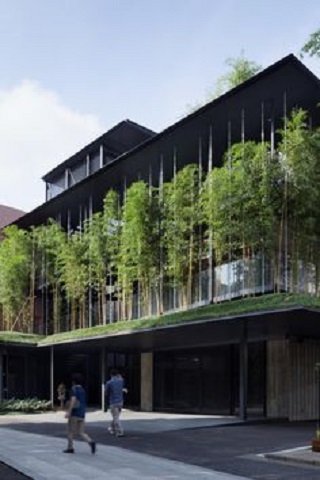From Guest Blogger Jason Garcia: The Future of Green Trends in Real Estate

That is why if we will ever start somewhere or at some point, we should start making “green” changes in our own home. The fact that sustainable real estate development is starting to create its own niche is already a significant improvement in humanity’s goal to save the environment, or at least what’s left of it.
Green practices in real estate are said to be the next step in investor evolution and is something that developers must seriously consider if they want to stay ahead in the housing market. The future of green energy in the housing market is here to stay.
Take a look at the green technologies that will make waves in the industry of real estate in 2017 and what you as a developer or buyer need to look out for.
Opening for natural light and air
With the soaring popularity of vertical living for modern dwellers, things we used to take for granted such as the air we breathe now becomes a luxury.
Lumiventt design technology is a trend in green architecture that allows the natural flow of light and air throughout a structure such as a condo building. This is perfect for tropical countries that are humid for the most part of the year. This can be achieved by incorporating large openings in the building so that natural air and ventilation can flow freely from front to back. This gives residents the option to open up more, turn off their lights, and make use of natural light and air more.
Maintaining a green wall
There’s the “great wall,” and then there’s a “green wall.” The former was about protection from invasions, while the latter is about fighting the biggest threat to human existence.
Vertical gardens in building facades are among the most popular green trends in the real estate industry. These garden terraces are maintained by a drip irrigation system. The green wall generates oxygen and absorbs harmful CO2 while insulating the building at the same time. Another obvious advantage is that, of course, a green wall is truly a feast for the senses.
Electricity from sunlight
By now, you have probably heard about solar energy or producing electricity using sunlight. But chances are you are still not using it because you think it is too expensive.
The recent years saw an expansion in the industry and dramatic decrease in the cost of solar panels or solar photovoltaics (PV). It is one of the first good things to happen in pursuing green energy in the real estate industry. Panel prices are now cost-competitive compared to the costs of conventional electricity in several places.
In Australia, nearly one million houses had solar PVs installed in their roofs by as early as 2012, and it looks like the solar power revolution is here to stay. At the same time, more communities are aggressively finding alternative ways to produce energy. For example, 30% of electricity in South Australia now comes from the wind. With more and more countries opening their markets for green and renewable energy, it sure looks like home developers will have no choice but to satisfy the demand.
Using alternate sources of energy are consistent with the aim to build more zero-energy buildings, which are engineered to rely on renewable sources of energy. Developers are encouraged to use solar cells and panels, wind turbines, and biofuels among others.
Stopping wastage with smart meters
The challenge now is not how to generate more energy, but how to use less energy and use it more smartly. Currently, most countries are producing energy based on what they think the demand will be. For example, if the demand last summer was huge, then it’s going to be like that too this year. However, when electric companies produce energy based solely on patterns of use, there’s meant to be some mismatch that leads to waste.
In order to address wastage, some regulators are backing the use of “smart meters” both in homes and businesses. These meters transmit information to the grid and give a more accurate calculation of the demand in real time, helping reduce possibilities of mismatch in supply and demand.
Natural materials on the rise
The use of natural materials is on the rise and is actually seen as a design revolution in terms of aesthetics. The use of wooden elements from the ceiling to the floor, as well as in furniture pieces is increasingly becoming more popular among interior designers. Other materials such as marble, metals, and clay are also design favorites.
Natural materials make a space more airy and breathable. Manufacturers are also creating quality and durable products made from reclaimed and renewable materials. They are trendy as well as classic and timeless.
Sustainable development is not just a fad. It is the future of real estate. As consumers and homeowners, it is definitely something you must consider if you want your properties to be ahead of the curve and remain high-value. For developers, this is an opportunity to grow your business and increase your bottomline. But other than the rewards, know that it is your responsibility to take the lead in green and sustainable practices.
